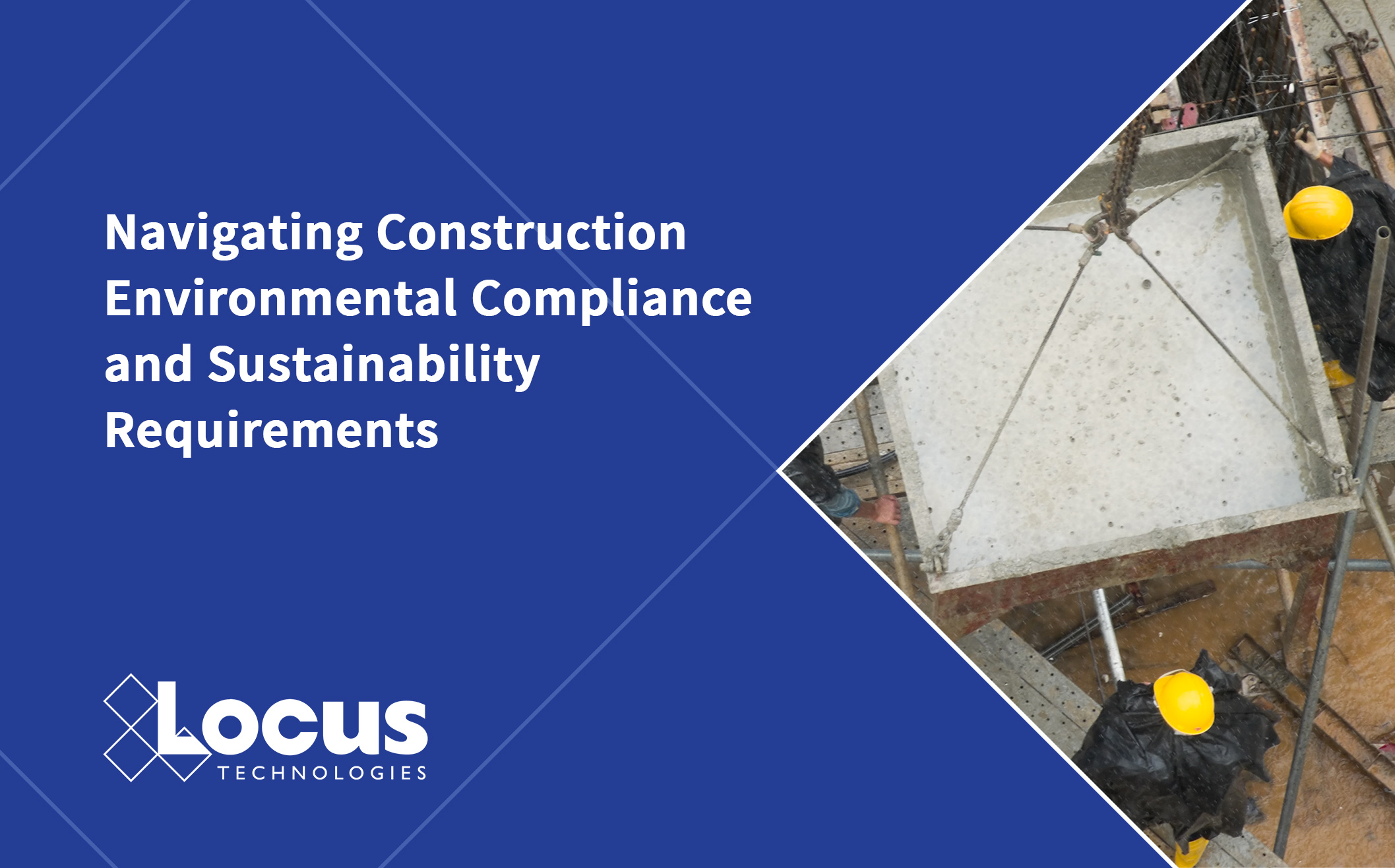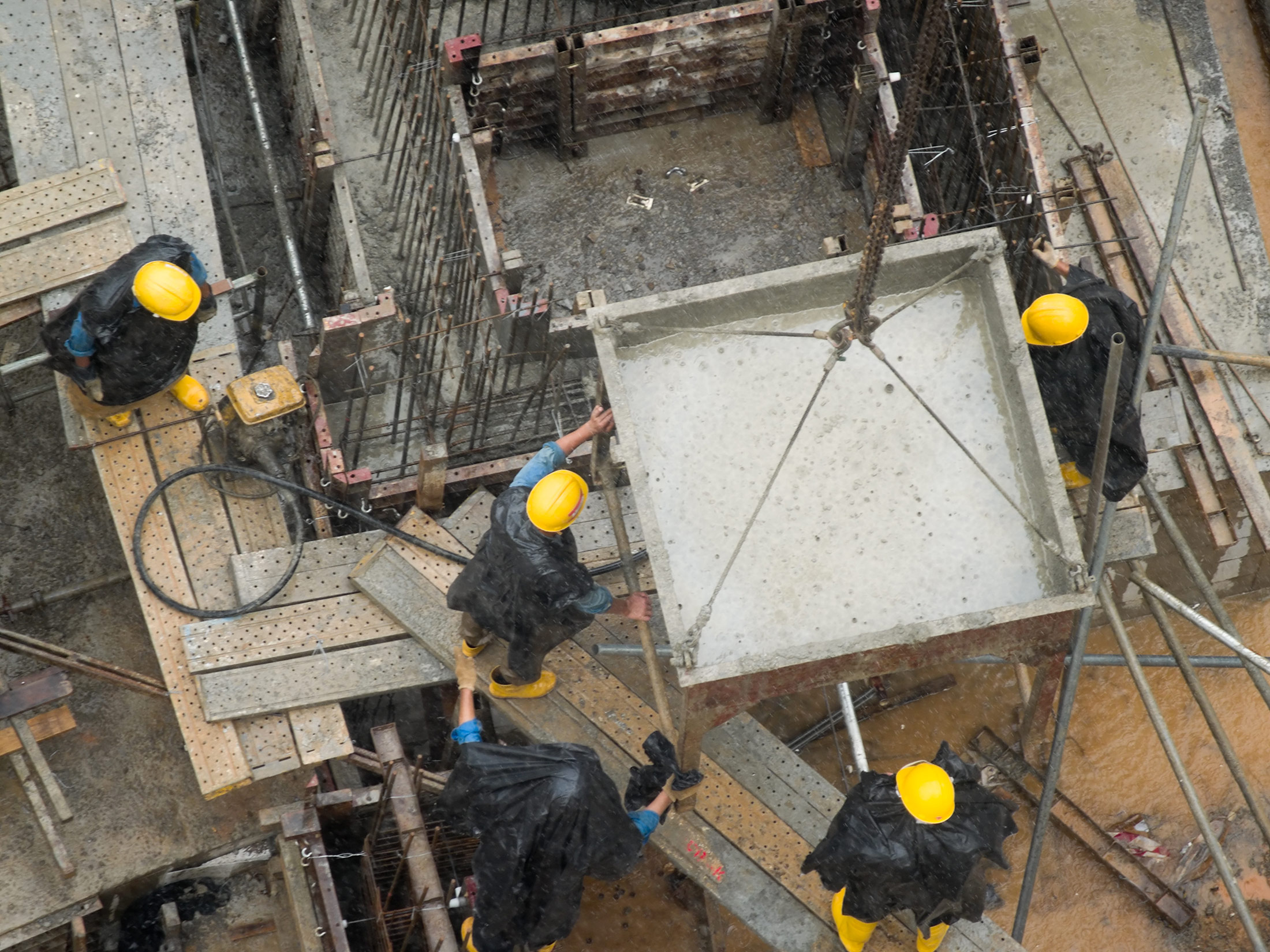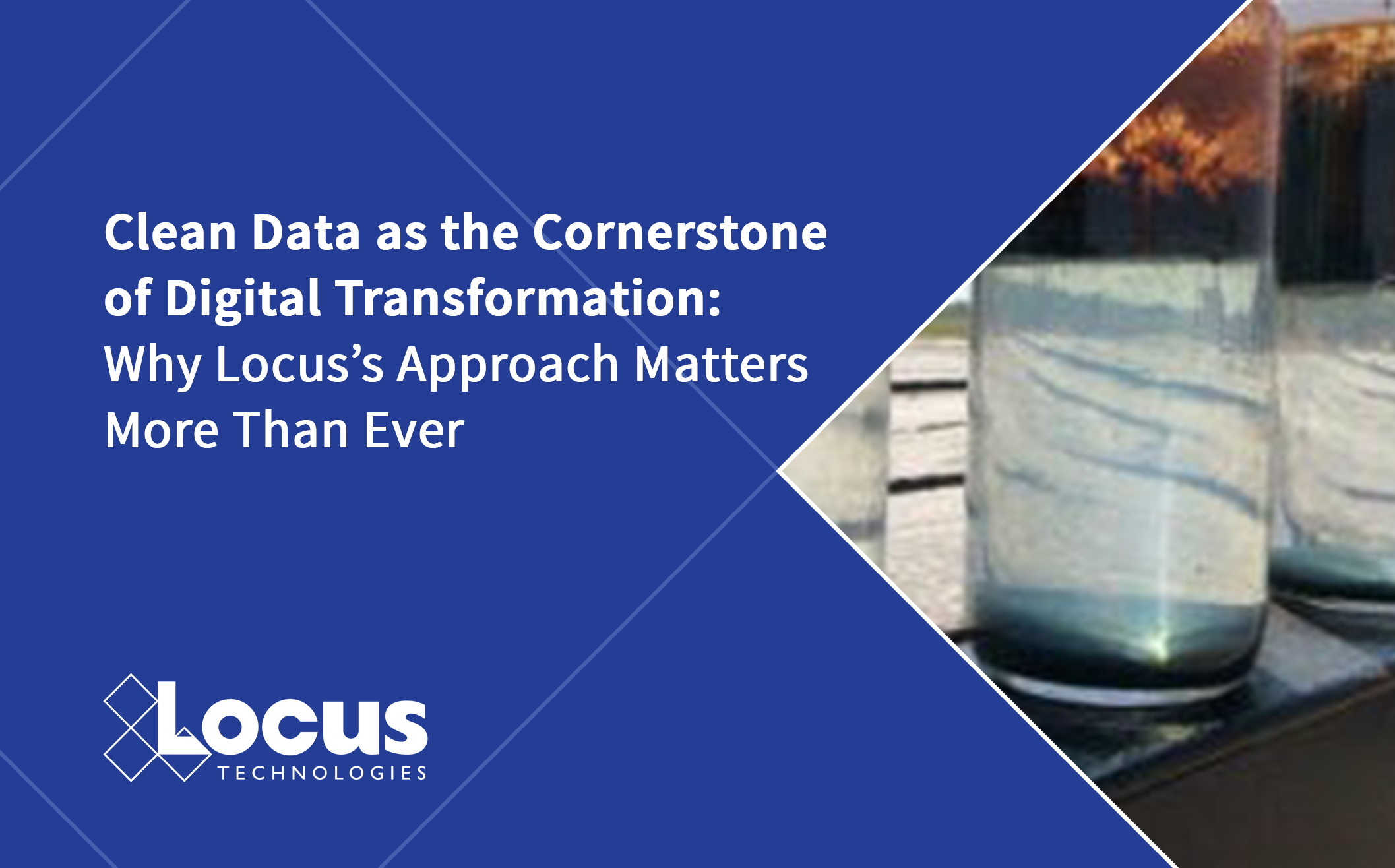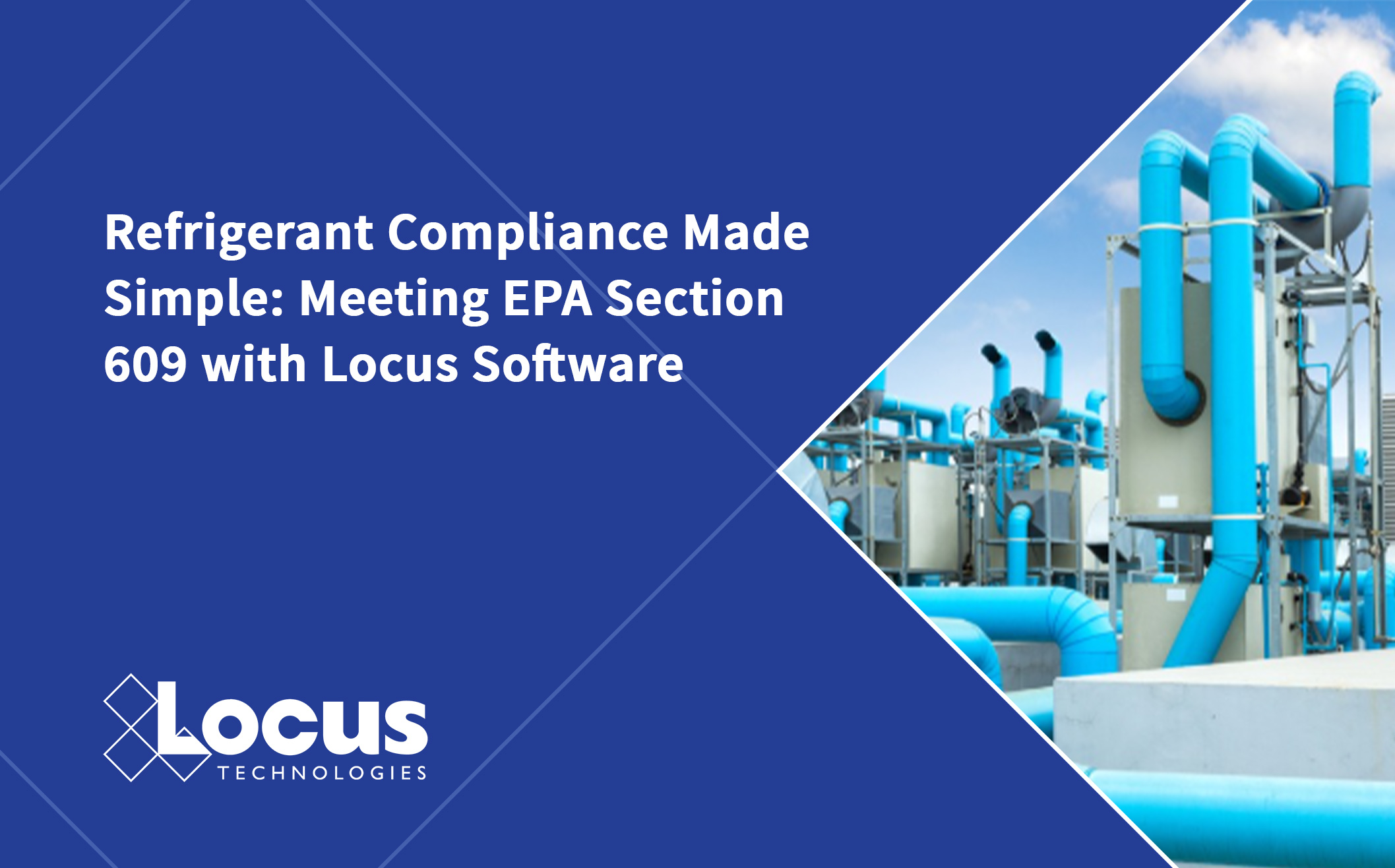Navigating Construction Environmental Compliance and Sustainability Requirements:
Software Solutions That Lead the Way for Construction Managers

Environmental Compliance and Sustainability in Construction
In today’s construction landscape, environmental compliance is more than a regulatory checkbox—it’s a critical component of responsible project management. From air quality monitoring to waste disposal and permit tracking, construction projects must meet stringent environmental requirements to avoid penalties and protect surrounding neighbors, patrons, and ecosystems.
Construction managers and their teams are responsible for ensuring all construction activities meet legal and regulatory requirements while actively working to reduce environmental impact. To ensure compliance with local, state, and federal environmental regulations, construction managers perform the following key tasks:
- Permit management: Secure all necessary environmental permits and approvals, which can include those for water discharge, air emissions, land use, and waste management.
- In construction, SWPPP is the acronym for Stormwater Pollution Prevention Plan. It’s a mandatory, site-specific document outlining how a construction project will control pollutants in stormwater runoff to protect local waterways. The SWPPP identifies potential pollutants, details Best Management Practices (BMPs) like erosion and sediment control, and is a requirement for obtaining a National Pollutant Discharge Elimination System (NPDES) permit for sites disturbing one acre or more. These permits are designed to manage stormwater runoff and prevent pollution, ensuring compliance with water quality standards.
- Environmental Impact Assessments (EIAs/EAs): Oversee EIAs to identify potential environmental risks, such as issues with soil contamination or sensitive habitats. Based on the assessment, they develop mitigation strategies.
- Pollution prevention: Implement controls to prevent water and air pollution. This includes managing stormwater runoff with controls like silt fences and sediment basins, controlling dust with effective suppression systems, and preventing the contamination of waterways.
- Hazardous materials management: Create and enforce a hazardous materials management plan for handling, storing, and disposing of regulated substances like asbestos, lead-based paint, or chemicals.
- Waste management: Develop comprehensive waste management plans focused on reducing, reusing, and recycling construction debris.
- Hazardous waste management: Develop comprehensive waste management plans focused on reducing, reusing, and recycling construction debris.
- Inspections and audits: Conduct regular site inspections and audits to monitor compliance with environmental regulations and address any non-compliance issues.
Beyond basic regulatory compliance, construction managers also integrate broader sustainability principles to improve a project’s environmental performance and long-term viability. These key tasks include:
- Sustainable material selection: Procure low embodied carbon materials
- Resource efficiency: Implement strategies to monitor and minimize the consumption of energy and water on the project site
- Site management: Implement sustainable site practices, such as sediment and erosion control, and protecting natural habitats, such as through wheel washing and concrete washout provisions
- Green building and infrastructure certifications: Guide projects through green building certification programs
- Lifecycle planning: Consider the entire lifecycle of a project, not just construction. This includes planning for post-construction maintenance, energy performance, and waste reduction to ensure the building’s long-term sustainability.
Sustainable Design strategies and rating systems such as LEED1 and Envision2 are complemented and substantiated by “Sustainable Construction” practices occurring during boots on the ground construction. Current movement in the construction sector is focused on mitigating embodied carbon dioxide content in materials such as glass, concrete and steel, further tasking construction managers with new sustainability concepts that rely heavily on data, not just contractor promises.
Sustainable construction has been an emerging trend since the Big Dig in Boston, spanning from 1991-2006, which delivered significant environmental benefits3:
- Carbon emissions in Boston dropped by 12% due to reduced idling and smoother traffic flow
- The project created over 300 acres of green space, including the Rose Kennedy Greenway and revitalized areas like Spectacle Island
- Soil excavated during construction was repurposed to cap and restore Spectacle Island, transforming a former landfill into a thriving ecosystem with over 2,400 trees and 26,000 shrubs
The reconstruction of lower Manhattan in the wake of the September 11, 2001, terrorist attacks also employed sustainable construction practices. Stringent air quality protection techniques included the installation of particulate filters on the tailpipes of diesel construction equipment, continuous air quality monitoring using Tapered Element Oscillating Microbalances (TEOMs) for PM-10 and PM2.5, and vigorous dust suppression techniques solidified that construction was moving down a cleaner path.
Fast-forward to 2017-2019 and Marin County, California codifies the “Buy Clean” movement, requiring construction with lower carbon impact4 concrete. Marin County followed along with a decade of research from the Carbon Leadership Forum, CLF5, in Washington State. These Buy Clean Programs incentivize or mandate the use of construction materials with lower embodied carbon as declared through Environmental Products Declarations, EPDs. Marin County set the first acceptance limits for how much embodied carbon is allowable in a concrete mix with a given breaking strength, by PSI (pounds per square inch) categories.

Today, despite dismantling some of the EPA federal level programs, continued work is being done on Buy Clean Programs and material decarbonization efforts throughout the US. As of 2025, nine states have passed “Buy Clean” laws to promote the use of lower-carbon materials in publicly funded construction projects. These state-level initiatives leverage government purchasing power to stimulate the market for cleaner construction materials and encourage manufacturers to reduce their embodied carbon emissions. A summary of State level programs is provided below:
- California: Passed the first Buy Clean legislation in 2017. The law initially required Environmental Product (EPDs) and set Global Warming Potential (GWP) limits for eligible materials like steel, flat glass, and insulation in public works projects.
- Colorado: Enacted its Buy Clean law in 2021. It requires the Office of the State Architect to set maximum GWP limits for materials such as asphalt, concrete, glass, steel, and wood.
- Hawaii: Is part of the Federal-State Buy Clean Partnership announced in March 2023.
- Illinois: Is a participant in the Federal-State Buy Clean Partnership.
- Maine: Joined the Federal-State Buy Clean Partnership in 2023.
- Maryland: Became a partner in the Federal-State Buy Clean Initiative in 2023.
- Massachusetts: Joined the Federal-State Buy Clean Partnership in 2023.
- Michigan: Is one of the states participating in the Federal-State Buy Clean Partnership.
- Minnesota: Welcomed into the Federal-State Buy Clean Partnership in 2023. The state passed its Buy Clean Buy Fair Act that year, which established a task force to guide the procurement of materials.
- New Jersey: Joined the Federal-State Buy Clean Partnership in 2023.
- New York: In 2023, the state set GWP standards for concrete mixes used in state projects, with guidelines that became mandatory in early 2025. New York is also a member of the Federal-State Buy Clean Partnership.
- Oregon: Passed its Buy Clean law in 2022, requiring life cycle assessments for materials used in public projects.
- Washington: Enacted the “Buy Clean, Buy Fair Act” in March 2024. The law requires the reporting and tracking of greenhouse gas emissions for certain building materials on large state construction project
A current listing of Buy Clean policy locations is mapped here: https://www.batchgeo.com/map/0a7f165939da9d291b183cfc7c326726
Outside of the United States, the Carbon Border Adjustment Mechanism (CBAM) and Corporate Sustainability Reporting Directive (CSRD) are shaping embodied carbon regulations in construction in the European Union (EU). CBAM is the EU’s tool to ensure that imported goods reflect the same carbon costs as those produced within the EU. It aims to prevent carbon leakage—where companies shift production to countries with looser climate rules—and to level the playing field for EU producers. Key features of the CBAM include:
- Transitional Phase (2023–2025):Importers must report embedded emissions (direct and indirect) of goods like cement, steel, aluminum, and fertilizers, but no financial penalties yet.
- Definitive Regime (2026 onward):Importers must purchase CBAM certificates equivalent to the carbon cost under the EU Emissions Trading System (ETS). If a carbon price was already paid abroad, it can be deducted
- Construction Impact: Materials like cement and steel—major contributors to embodied carbon—are directly targeted. This pushes manufacturers and builders to adopt low-carbon alternatives
The EU’s CSRD mandates that large companies (including some non-EU firms with significant EU revenue) report on their environmental and social impacts. This includes:
- Embodied Carbon Transparency: Firms must report on emissions across their value chains, including those embedded in construction materials.
- Strategic Pressure: Increased transparency may drive peer pressure and strategic shifts toward low-carbon procurement and design

The Role of Environmental Compliance and Sustainability Software in Construction:
Given the broad range of environmental and sustainability indicators needed to prove compliance with these programs, a streamlined software solution is needed to help construction environmental teams to track and manage this data. Fortunately, a range of software platforms now exist to help construction teams maintain compliance and integrate sustainability oversight into their daily workflows.
Environmental compliance software enables construction managers to:
- Track and manage permits
- Monitor inspections and audits
- Maintain up-to-date documentation
- Ensure regulatory deadlines are met
- Integrate environmental and sustainability data into broader project workflows
These tools reduce the risk of non-compliance and help teams stay organized, especially on large or complex projects.
Leading Solutions in the Market
Procore
Procore is a widely used construction management platform that includes robust tools for environmental compliance. It centralizes project documentation, tracks permit applications, and integrates with specialized permitting software. Procore’s inspection management and document control features help ensure that environmental requirements are met throughout the project lifecycle.
Autodesk Construction Cloud
Autodesk Construction Cloud provides a unified workspace for design, collaboration, and compliance. Its document management system supports version control, RFIs, and submittals, ensuring that the latest environmental documentation is accessible to all stakeholders. This is especially valuable during the design and planning phases, where early compliance decisions can have long-term impacts.
Expedition Software
Expedition focuses on contract administration and business management within construction projects. While not exclusively an environmental tool, it supports compliance by managing contracts, submittals, RFIs, change orders, and payment tracking. These functions help keep projects on schedule and within budget, indirectly supporting environmental goals by reducing delays and miscommunication.
Locus Technologies
Locus Technologies stands out as a comprehensive provider of environmental compliance and sustainability metric management tools for the construction sector, relying heavily on the underlying data to support contractor claims. The Locus Platform is a meta-data driven platform, not just a construction document management repository. For instance, if a contractor’s Waste Management Plan claims a 95% landfill diversion rate for structural steel, the Locus Platform allows for the receipt of weight tickets to perform the underlying math showing the diversion. Delivery tickets for site materials are also tracked along with corresponding EPDs to show embodied carbon from construction materials. Their platform offers cloud-based solutions for tracking environmental data, managing permits, and ensuring regulatory compliance across multiple sites. Locus enables real-time data access, customizable dashboards, and integration with other enterprise systems, making it a powerful ally for construction teams focused on sustainability and compliance.
| Software | Key Features | Pros | Cons |
|---|---|---|---|
| Procore | Procore is a widely used construction management platform that includes robust tools for environmental compliance. It centralizes project documentation, tracks permit applications, and integrates with specialized permitting software. Procore’s inspection management and document control features help ensure that environmental requirements are met throughout the project lifecycle. | Comprehensive project documentation and inspection management; Strong integration with permitting software; Widely adopted in the construction industry. | May require training for full utilization; Subscription cost can be high for small teams. |
| Autodesk Construction Cloud | Autodesk Construction Cloud provides a unified workspace for design, collaboration, and compliance. Its document management system supports version control, RFIs, and submittals, ensuring that the latest environmental documentation is accessible to all stakeholders. This is especially valuable during the design and planning phases, where early compliance decisions can have long-term impacts. | Unified workspace for design and compliance; Robust document management with version control; Strong collaboration tools across stakeholders. | Complex interface for new users; Requires integration with other Autodesk tools for full functionality. |
| Expedition Software | Expedition focuses on contract administration and business management within construction projects. While not exclusively an environmental tool, it supports compliance by managing contracts, submittals, RFIs, change orders, and payment tracking. These functions help keep projects on schedule and within budget, indirectly supporting environmental goals by reducing delays and miscommunication. | Effective contract and business management; Supports compliance through administrative tracking; Helps reduce delays and miscommunication. | Not specialized for environmental compliance; Limited sustainability tracking features. |
| Locus Technologies | Locus Technologies stands out as a comprehensive provider of environmental compliance and sustainability metric management tools for the construction sector, relying heavily on the underlying data to support contractor claims. The Locus Platform is a meta-data driven platform, not just a construction document management repository. For instance, if a contractor’s Waste Management Plan claims a 95% landfill diversion rate for structural steel, the Locus Platform allows for the receipt of weight tickets to perform the underlying math showing the diversion. Delivery tickets for site materials are also tracked along with corresponding EPDs to show embodied carbon from construction materials. Their platform offers cloud-based solutions for tracking environmental data, managing permits, and ensuring regulatory compliance across multiple sites. Locus enables real-time data access, customizable dashboards, and integration with other enterprise systems, making it a powerful ally for construction teams focused on sustainability and compliance. Conclusion As environmental regulations become more complex and enforcement more rigorous, construction teams must adopt digital tools to stay ahead. Platforms like Locus Technologies, Procore, Autodesk Construction Cloud, and Expedition offer tailored solutions that simplify compliance and promote sustainable building practices. By integrating environmental oversight into everyday project management, these tools help ensure that construction not only builds the future—but protects it too. | Advanced environmental data tracking and analytics; Supports real-time data access and dashboard customization; Strong support for sustainability metrics and compliance documentation. | May be overkill for small projects; Requires detailed data input for full functionality. |
Conclusion
As environmental regulations become more complex and enforcement more rigorous, construction teams must adopt digital tools to stay ahead. Platforms like Locus Technologies, Procore, Autodesk Construction Cloud, and Expedition offer tailored solutions that simplify compliance and promote sustainable building practices. By integrating environmental oversight into everyday project management, these tools help ensure that construction not only builds the future—but protects it too.
Dorian Bailey
Director, Alliances and Customer Success
Ms. Dorian Bailey leads all customer success and partnership endeavors for Locus Technologies, and she is the company’s in-house expert on embodied carbon, clean construction, and government procurement. Dorian is a frequent author and speaker, and she advises commercial and government entities on their use of software to manage environmental data, fulfill compliance requirements, and prepare regulatory disclosures.
Dorian joined Locus Technologies in early 2024 after working as the Chief of Science and Sustainable Construction for the Port Authority of New York & New Jersey. Leaning on her unique expertise in environmental chemistry and materials testing, and her 28 years in the Materials Engineering Unit of the Construction Management Division at the Port Authority, Dorian helped shape the Locus Sustainable Construction software application to effectively quantify and mitigate the environmental impacts of construction. Dorian has a master’s degree in environmental science from the New Jersey Institute of Technology (NJIT), is accredited as a Certified Hazardous Materials Manager (CHMM), and she is a credentialed Envision Sustainability Professional.
Locus is the only self-funded water, air, soil, biological, energy, and waste EHS software company that is still owned and managed by its founder. The brightest minds in environmental science, embodied carbon, CO2 emissions, refrigerants, and PFAS hang their hats at Locus, and they’ve helped us to become a market leader in EHS software. Every client-facing employee at Locus has an advanced degree in science or professional EHS experience, and they incubate new ideas every day – such as how machine learning, AI, blockchain, and the Internet of Things will up the ante for EHS software, ESG, and sustainability.




